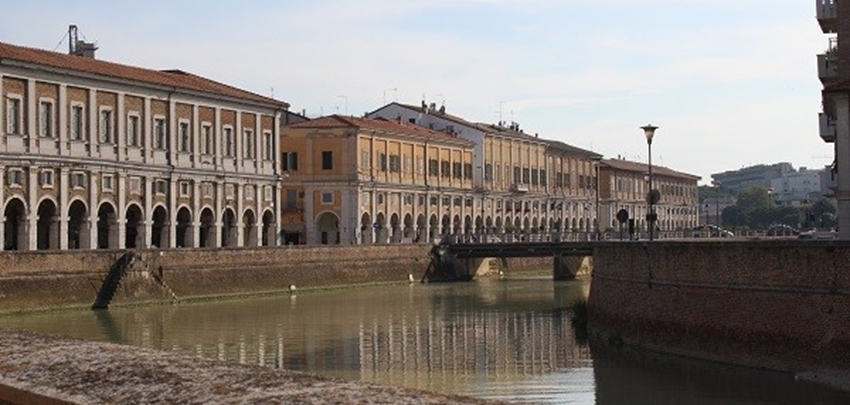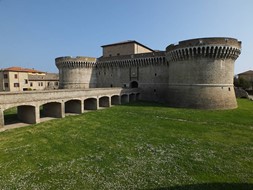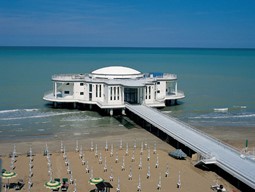Senigallia

The seaside resort of Senigallia was founded by the Romans (285 BC). In the Middle Ages it was an important trading center for the Duchy of Urbino. Later, Senigallia turned into one of the more important seaside resorts on the Adriatic coast. The beach is known for its beautiful soft sand, also called Spiaggia di Velluto (the velvet beach).
As the only city in the entire region - just north of the Monte Conero - Senigallia has a 13 kilometer long beautiful, flat and clean 'golden' sandy beach right outside the door. The rest of the coastal region consists almost exclusively of pebbly beaches. Moreover, you can certainly walk into the sea for eighty to one hundred meters before you reach the middle of the clear, clean water, making the beach very suitable for small children. The attractive promenade of Senigallia is one long succession of the best (fish) restaurants, cozy beach bars, sports fields for tennis and volleyball and children's playgrounds. You will also find the Rotonda a Mare, the symbol of the city.
The center of this seaside resort offers nice streets, squares and parks, a daily market, a fishing port, beautiful bridges over the Misa and cozy terraces.
Eye-catcher in the center is the Foro Annonario, the central oval nineteenth-century market square of the city. On this square you will find the daily market every morning. Furthermore, the Rocca Roveresca is definitely worth a visit, a beautifully restored square castle with four large towers.
Along the southern river bank of the Misa, you will find the particularly beautiful colonnade Portici Ercolani. Especially in the afternoon this is a picture, when the light enters beautiful portraits in the portici. Among the 126 arches - made with beautiful white stones from Istria - you will find especially cozy bars and shops.
Also pay a visit to the Chiesa delle Croce, a magnificent little golden church from 1608. Undoubtedly the most beautiful in the city. Noteworthy is the contrast between the outside and inside. From the outside the church is built in Renaissance style, while the inside is completely decorated in a baroque style, in all its glory with lots of gold and no less than six altars.



